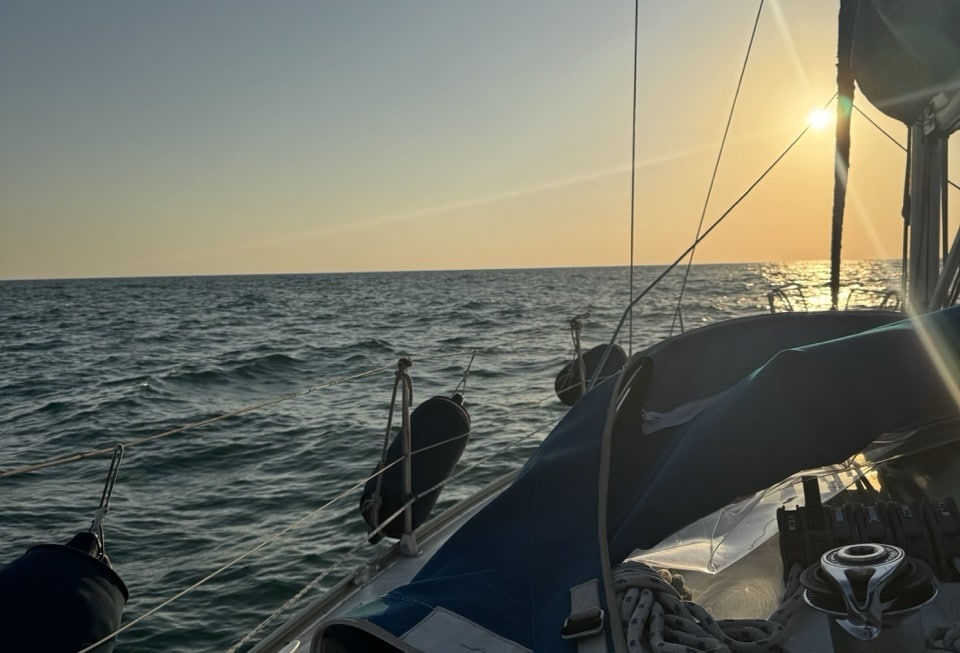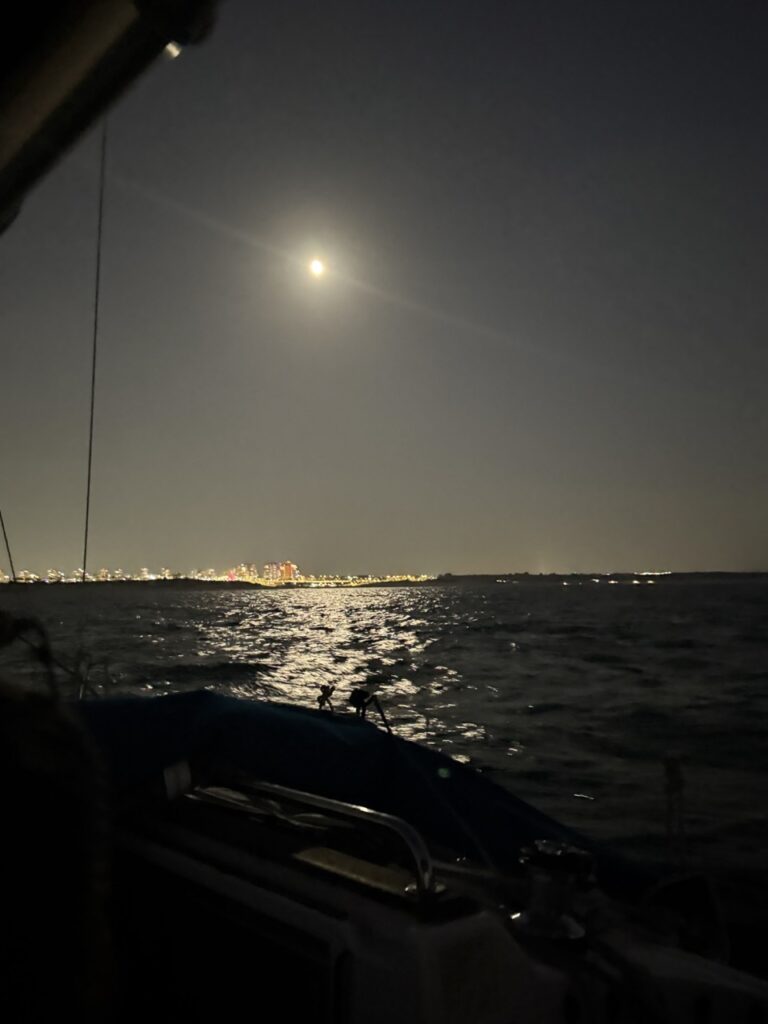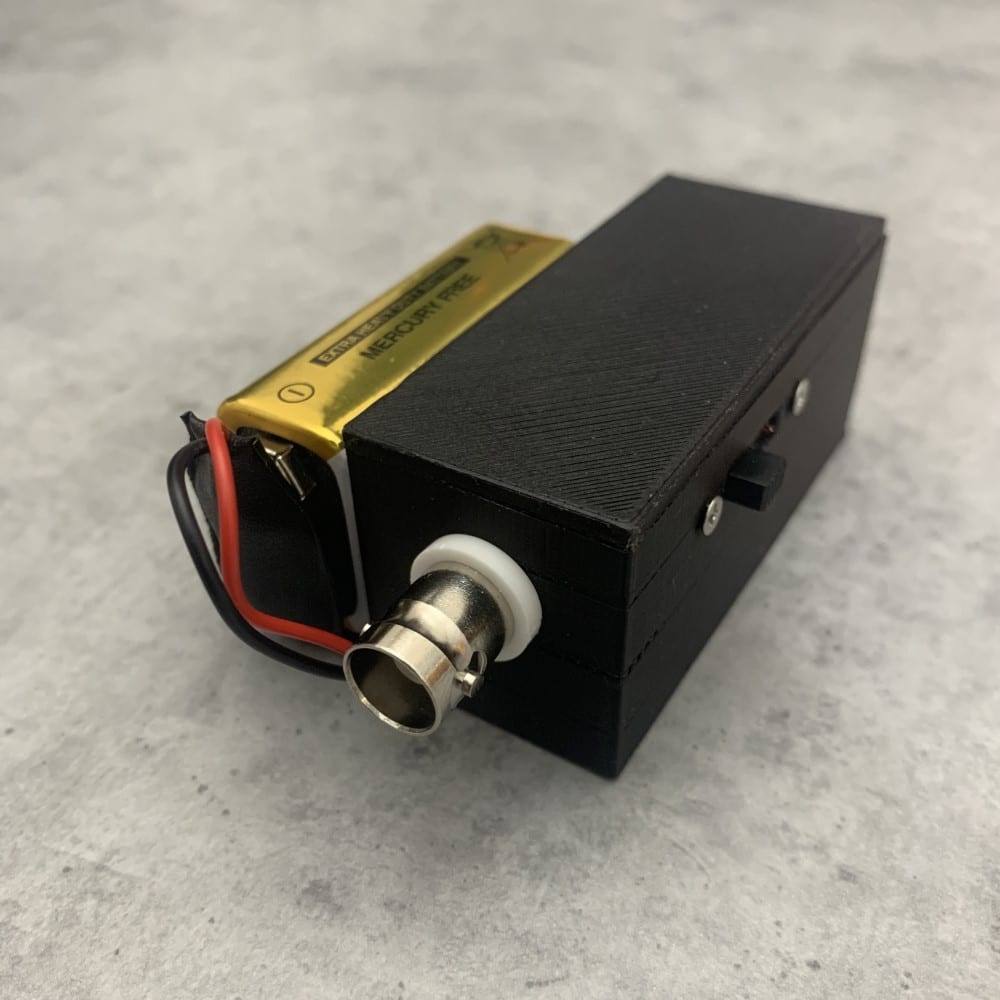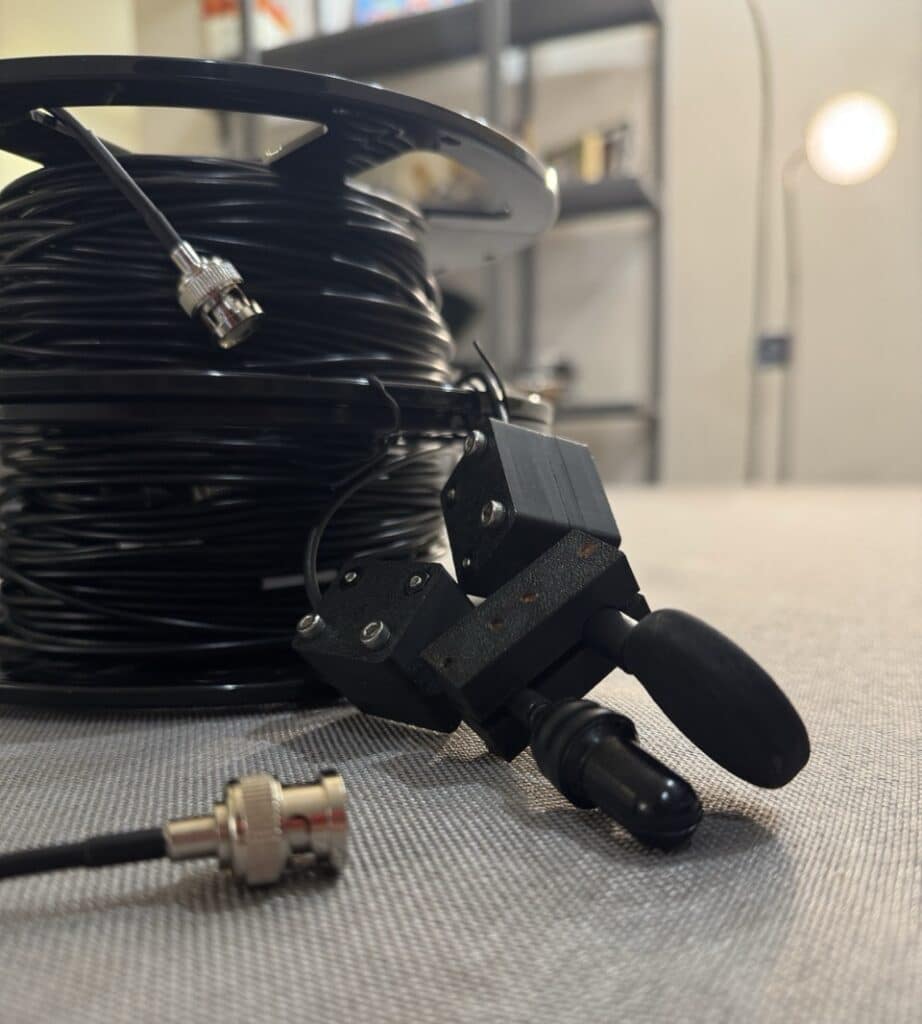
Immersing Hydrophones in the Depths: A Yacht Test in the Mediterranean
Last week we set sail from Ashdod Marina for a special experiment – an open-sea test of our Hydrophones. Instead of staying in the lab or tank, we wanted to hear how they behave when fully immersed in saltwater at real depths.
Devices:
AquaHear 1.5 Hydrophone, AquaHear 2.5 Hydrophone, RigidEnhancer Hydrophone Preamplifier, a HiFi amplifier, OneOdio A71 Headphones, a Laptop
The Experiment
Our goal was to observe two models side by side, the AquaHear 1.5 Hydrophone and the AquaHear 2.5 Hydrophone deep underwater in real-life conditions. We fixed them close together on a simple plastic support and lowered them overboard, testing at regular intervals of 5, 10, 15, 20, 25, and 30 meters.
By keeping both Hydrophones next to each other, one could transmit while the other listened. In some recordings we even played music through one Hydrophone, while the other picked up the signal under water. This allowed us to explore not only the ambient soundscape of the sea but also how well our Hydrophones handle controlled transmissions across different depths.
Why These Hydrophones?
- AquaHear 1.5 Hydrophone – Compact and versatile and quite sensitive, ideal for quick deployments, portable fieldwork, and research.
- AquaHear 2.5 Hydrophone – A sturdier model, designed for users who need its omnidirectional characteristic and durability.
Both Hydrophones are designed with polyurethane protection, ensuring reliability in saltwater conditions. Comparing them side by side gave us useful insights into how they respond to both ambient marine sounds and transmitted signals.
Preparation
The work always starts at home. We prepared a 40-meter-long cable for both of the hydrophones and attached them together by a 3D-printed part. Then we made a light test to make sure everything is working properly and nothing is missing.
After packing our bag with the hydrophones, the additional gear for the recording and a computer, we were ready for the trip.

“The cure for anything is salt water – sweat, tears, or the sea”
Karen Blixe


Impressions from the Water
At first, we played music (it’s Russian, don’t be scared) just to check everything was working properly. You can hear that the sound isn’t fully clear because we adjusted the preamplifier gain to make the song audible rather than just the current. There was a strong current and relatively high waves that day.
Additionally, you can hear that the AquaHear 1.5 picks up a deeper and fuller sound of the current between the music notes, this is because this model is more sensitive than the other AquaHear models.
After slightly submerging both hydrophones, we realized that the some device on the yacht would significantly obstruct the sound of the sea, so we prioritized listening to the audio quality of the transmitted music in subsequent recordings.
After immersing it even deeper and turning off the music, we could clearly hear the slower current from both hydrophones—the sound of the sea.
We turned the music back on, 30 meters underwater, and it sounded fantastic. It was almost like someone was playing music on Spotify. We also noticed some “lags” in the sound, which are likely the impact of the hydrophones against the sea floor since we had lowered them a bit too deep.
Finally, we removed the hydrophones with the help of someone on board. While we were taking them out, we had the chance to experience the night city lights from deep in the Mediterranean, all by ourselves – a quite calm and meditative time.
Reflections on the Trip
There’s something remarkable about standing on a yacht, lowering Hydrophones into the Mediterranean, and realizing that you’re connected to an entire hidden soundscape just beneath the surface.
For us at Natako Audio, these moments remind us why we build Hydrophones: to make the unseen, unheard world of underwater sound accessible – whether for scientific research, professional projects, or pure curiosity.
We’d also like to give a huge thank you to our friend Sasha Gelfand, who brought everyone together and helped make this trip happen. A heartfelt thanks to Miron and Ira Krokhmal for sharing their beautiful yacht, “Dumbo,” and giving us the chance to experience sailing with them – it truly made the day unforgettable. A special thank you to Rudik and Lena Shapira for jumping in so spontaneously and helping us carry out the experiment – your energy and kindness made it all even better.
What’s Next?
This outing was only the beginning. We plan to extend our Hydrophone recordings to different sea states and seasons, and share more sound samples and comparisons soon.
If you’d like to explore the models we tested, you can read more here:
Additionally we would be happy to have you subscribe to our newsletter, we won’t send you emails every week – just the important stuff.
